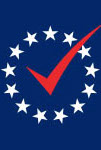Voting Technology: Vote-by-Mail, and Residual Votes in California, 1990-2010
Working Paper No.: 120
Date Published: 2013-09-01
Author(s):
R. Michael Alvarez, California Institute of Technology
Charles Stewart III, Massachusetts Institute of Technology
Dustin Beckett, California Institute of Technology
Abstract:
To test the supposition that the lost votes recovered by California through the modernization of
voting technologies may be being undone by the trend toward more voting by mail, Table A1
attempts to quantify changes in the residual vote rate in each county from the presidential
elections of 1992 to 2008 due to changes in voting technologies, and due to the growth in voting
by mail. The table starts by reporting turnout in the 1992 and 2008 presidential elections; the
percentage of ballots cast by mail in 1992 and 2008, along with the change across the two years;
the type of voting equipment used in 1992 and 2008; and the estimated change in the residual
vote rate from 1992 and 2008 based on changes in voting technology, using the coefficients from
Table 4 in the text. It then calculates the estimated number of votes represented by this
coefficient by multiplying it by turnout for 2008. Negative values indicate an estimated
reduction in the residual vote in 2008 due to technology changes since 1992. For instance, for
Alameda County, we estimate that the change from punch cards in 1992 to precinct-count optical
scanning in 2008 resulted in a reduction in the number of residual votes in 2008 by 5,343 (≈ -
0.85% × 628,545).
Attachment
 Voting Technology: Vote-by-Mail, and Residual Votes in California, 1990-2010
(Size: 125 KB)
Voting Technology: Vote-by-Mail, and Residual Votes in California, 1990-2010
(Size: 125 KB)
